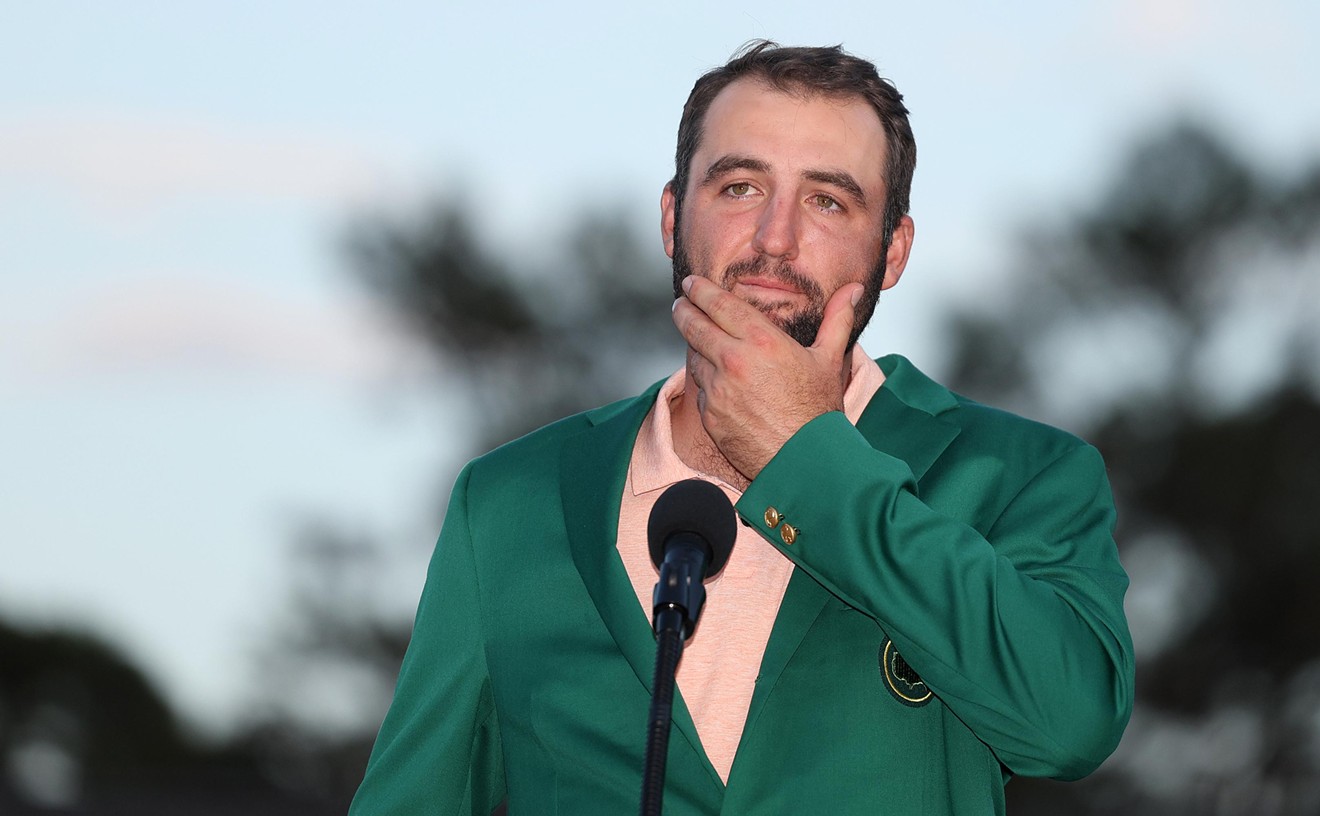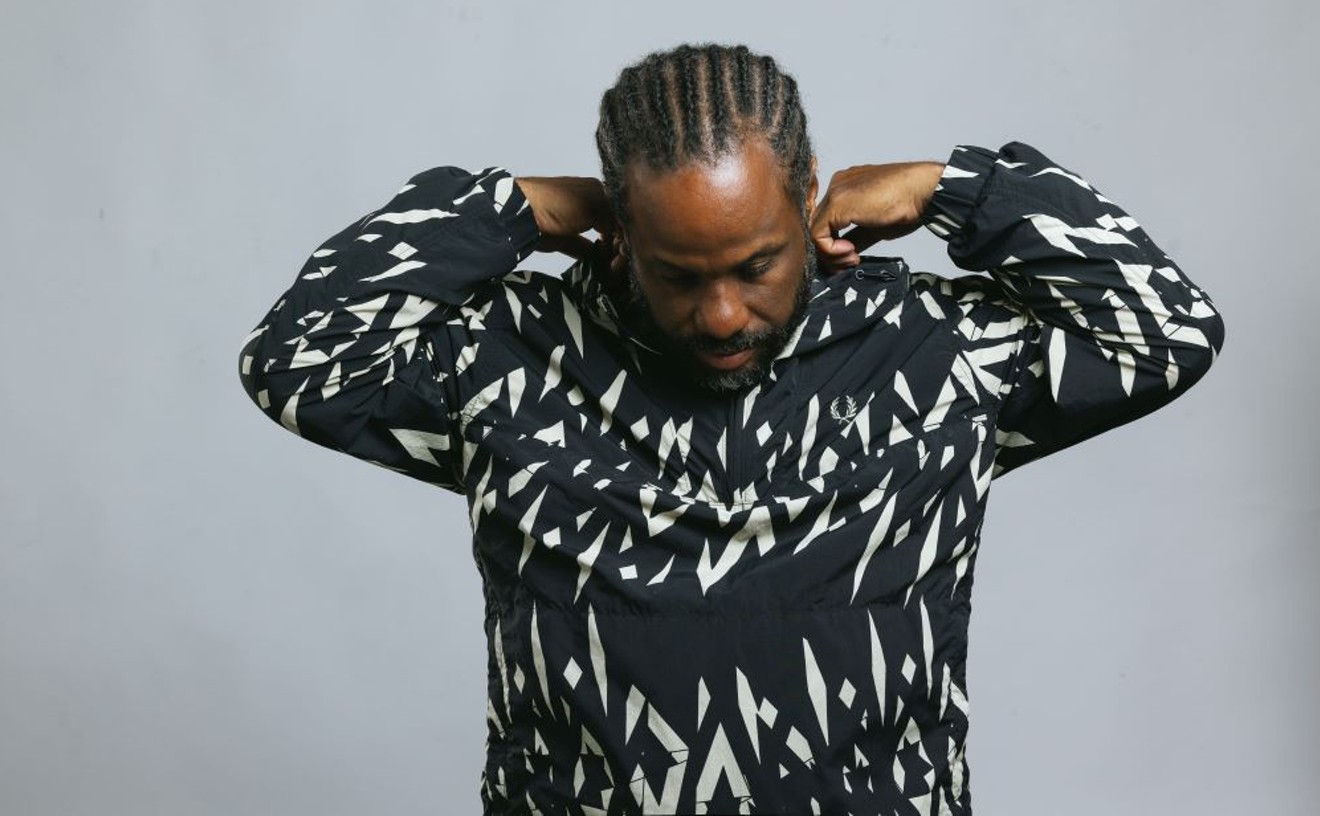An Englishman, Maybury has indeed been "out," in every conceivable sense of the term, for years--first as a collaborator of the late gay avant-garde director Derek Jarman and more recently as a filmmaker and videomaker in his own right (1991's Tunnel of Love; 1992's Man to Man; and Premonition of Absurd Perversion in Sexual Personae, Part 1, also 1992). But then so was the subject of Maybury's new film, Love Is the Devil: Study for a Portrait of Francis Bacon. One of the most important visual artists of the 20th century, the Irish-born Bacon--who died in Spain in April 1992 at the age of 83--lived a life so wildly bohemian as to render "in" and "out" labels beside the point. More importantly, there was no mistaking the sexuality inherent in his work--enormous, richly colored canvases of twisted, abject figures that in the words of writer Michel Leiris give the viewer "direct access to an order of flesh-and-blood reality not unlike the paroxysmal experience provided in everyday life by the physical act of love."
"Francis Bacon, along with David Hockney, has always been enormously important to me," says Maybury. "They were the only English artists who had a) operated and existed on an intellectual level of real seriousness, and b) you automatically recognized in their images their sexuality. That's what's so absurd about the problems I've had in making this film. People really did say to me, 'You're going to damage his reputation.' I'm sorry, either you have a really distorted perspective of who I am and what I'm doing, or you have a really distorted picture of Francis Bacon."
Maybury found himself in the position of having to create a film about an artist without showing any of that artist's works. But being a painter himself, Maybury found a way to surmount the seemingly insurmountable. For in telling Bacon's story, the writer-director creates a mise-en-scene that evokes key Bacon works such as Two Figures (1953), Portrait of George Dyer Crouching (1966), and Triptych May-June (1973) in ways that anyone with only a passing knowledge of the artist can instantly recognize.
There are precedents of a sort for this; films as diverse as Performance (1970) and Last Tango in Paris (1973) have evoked Bacon's canvases. Yet none has cut as deeply into Bacon's life and work as Love Is the Devil. Starring Derek Jacobi as Bacon and Daniel Craig as George Dyer, the petty thief who became Bacon's lover and most important model, this crisply made drama gets to the heart of the painter's life and work in a way that only a handful of films about artists have attempted. And Maybury manages to shed needed light on the Bacon-Dyer love affair, which ended with the latter's death from a drug overdose in Paris in 1971 on the eve of an exhibition of Bacon paintings at the Grand Palais in which Dyer was the principal subject.
"Love Is the Devil is a tragedy," Maybury explains over breakfast at a West Hollywood restaurant. "It's not just George's tragedy, it's Francis' tragedy. Still, my covert agenda all the way down the line was that this is the George Dyer story, rather than the Francis Bacon story. If you look at the biographies, even Daniel Farson's The Gilded Gutter Life of Francis Bacon, on which my film is based, there's virtually nothing about George. There are anecdotes, but as it shows in the film, he's effectively been erased by Bacon's friends. They say he was a kind of troubled, very simple East End guy, with a stutter, and rather strangulated voice. I tried to show something more."
Maybury shows a lot more. His depiction of the Bacon-Dyer relationship echoes the lives and loves of otherwise dissimilar self-destructive gay bohemians such as playwright Joe Orton and filmmaker Rainer Werner Fassbinder. Dyer met Bacon while the former was burglarizing the latter's London house (the gay S&M "meet cute" of all time). While Dyer played the dominant role sexually, he was subservient to Bacon in every other way, as was the case with Orton's and Fassbinder's lovers. He never fit in with the artist's viper-tongued circle of friends (played in the film by Jarman regulars Tilda Swinton and Karl Johnson), and he wasn't able to establish any sort of life for himself outside of Bacon's orbit. Maybury feels that, unique as the Bacon-Dyer menage may appear at first, it's not all that uncommon in romantic relationships of all sorts.
"The more intense the love, the more incongruous Francis and George become because of the difference between them," he observes. "The more you love someone, in a way, the more you can hurt them--and the more they can hurt you. Dyer's death might have been an accident. Bacon took it as a suicide. When someone chooses to take their own life, I actually respect that. Particularly in recent years with AIDS. Friends of mine have taken their own lives because they didn't want to go on anymore. I respect that. I don't see that as chickening out. It's certainly not the 'easy way out.'
"You know," Maybury continues, "10 years before George Dyer, there was Bacon's love affair with Peter Lacy. Lacy didn't actually commit suicide, but he drank himself to death in a piano bar in Tangier. Bacon was told Lacy had died on the eve of his Tate retrospective. It was almost 10 years to the day when George tops himself! And then when Bacon dies, he leaves $12 million to another East End white boy, John Edwards. That was the official amount, but it was probably considerably more than that."
Maybury feels that Bacon's frankness--about sexuality and everything else--might well have played into the hands of the painter's detractors. But for him it's always been key to his interest in the artist.
"There's always been an argument against Bacon because of the theatricality and formulaic aspect of the work," Maybury explains. "That John Berger essay in Ways of Seeing comparing him to Walt Disney is a part of that. It's the English disease of resenting success. Bacon was a success on such an intellectual scale. At the same time he single-handedly erased Graham Sutherland and that whole neoromantic school of English artist. Just wiped them off the face of the scene! That to me was the most exciting thing about Bacon. Despite the deluge of Abstract Expressionism and American heroic painting--which we've all since found out was sponsored by Bill Paley and the CIA anyway--Bacon was still painting the figure. That was a very radical thing to be doing. So there was a lot of resentment against him, especially on the part of people who had hitched their wagon to the Abstract Expressionists."
There was also resentment against Bacon the man, whose dandified eloquence was captured several times on film, a fact that helped Maybury and actor Jacobi enormously.
"I got my hands on every documentary there is on Francis Bacon, and we looked at them," the filmmaker recalls. "We decided early on that it shouldn't be an impersonation. Derek doesn't try to impersonate his voice. But what he does do is the body language, the gestures. There was one tape that Dan Farson gave me that was never broadcast. It was him interviewing Bacon in a little gallery. Dan Farson was acting as the straight man, feeding him lines. He knew he could get him to make 'Baconesque' remarks. But when Bacon disagrees with something Dan Farson says, he spins his chair around.
"You know, in interviews, Bacon has this incredibly urbane, almost kind of chi-chi way of talking. He'll slip every so often into the very 'Serious Intellectual Francis Bacon,' but then this coquette kind of appears that's completely contradictory to that. Like Warhol, he hid it behind that fantastic character he'd created. Bacon in London, it was much like Warhol in New York. And in a funny kind of way, when he died it was much like when Warhol died. I certainly didn't know Warhol, but he was a hero of mine from school days. When he died you really felt a chunk of New York had died too. The same was true with Bacon. I met him at parties--people introduced me--but in a sense I didn't want to know him. I was terrified of him on one hand, and on the other it's 'Never meet your heroes, they'll always disappoint you.'"
Now 40, Maybury has, over the years, been a player in gay bohemian scenes almost as wild as Bacon's. His video-film Remembrance of Things Fast (it won the 1994 Independent/Experimental award from the Los Angeles Film Critics Association) reflects this. Its mixture of documentary, narrative, and purely abstract imagery finds gay porn star Aidan Shaw drifting through a landscape also inhabited by the likes of Swinton and Rupert Everett.
It seems eons since films like Jarman's Sebastiane (1976) explored homoeroticism with some degree of frankness. In Remembrance of Things Fast, Maybury goes much further than his mentor--thanks to his porn-star friend Aidan Shaw.
"I wanted to put a gay sex scene on [British TV's] Channel 4," says Maybury with an enormous grin. "I knew that one way or another they would screen it. Also I wanted to make a porn scene that was the way I wanted to see it. Not 'the cum-shot scene.' Still, when I came to doing it, I was sort of terrified. It was 'What do I do now?' The other boy wasn't an actor at all, so Aidan was pretty terrified as well. The other boy was pretty game, but they didn't actually fancy each other at all--which often happens in porn. It was just trying to make something sexy that was beautiful at the same time. I didn't want it to be all Day-Glo and pimples.
"I've just made another video-film with Aidan--a short based on the Genet poem 'The Man Sentenced to Death.' It's a kind of multiscreen video with a French actor, Pascal Greggory. He's reciting the poem in French. You've seen him in Eric Rohmer's Pauline at the Beach and Patrice Chereau's Queen Margot. In fact he was Patrice Chereau's boyfriend for a while. Pascal's very cool in the film. I don't speak French, but I deliberately had him do it in French. I showed it in Paris this year as part of a video-art festival they had. It went down really, really well. The intention was, it would annoy English people because it was in French, and it would annoy French people because it's a really good film about Genet made by an Englishman. So it's Pascal and Aidan and a whole bunch of boys masturbating! It's very arty and pretentious and really sexy. I'm even in it, having a wank. I thought, if I can get all my friends to do this, I should do it too!
"Oh," adds Maybury, breaking into peals of laughter, "how one suffers for one's art!"
Love Is the Devil.
Written and directed by John Maybury. Starring Derek Jacobi, Daniel Craig, Tilda Swinton, and Annabel Brooks. Opens Friday.










